Abstract
A model suicide vector (pBAP19h), designed for the potential containment of genetically engineered microorganisms, was made by constructing a plasmid with the hok gene, which codes for a lethal polypeptide, under the control of the lac promoter. The vector plasmid also codes for carbenicillin resistance. In the absence of carbenicillin, induction of the hok gene in vitro caused elimination of all detectable cells containing the suicide vector; pBAP19h-free cells of the culture survived and grew exponentially. In the presence of carbenicillin, however, the number of cells containing pBAP19h initially declined after induction of hok but then multiplied exponentially. The surviving cells still had a fully functional hok gene and had apparently developed resistance to the action of the Hok polypeptide. Thus, high selective pressure against the loss of the suicide vector led to a failure of the system. Soil microcosm experiments confirmed the ability of a suicide vector to restrict the growth of a genetically engineered microorganism in the absence of selective pressure against the loss of the plasmid, with 90 to 99% elimination of hok-bearing cells within 24 h of hok induction. However, some pBAP19h-bearing cells survived in the soil microcosms after hok induction. The surviving cells contained an active hok gene but were not capable of normal growth even after elimination of the hok gene; it appears that a mutation that made them Hok resistant also reduced their capacity for membrane functions needed for energy generation and exponential cell growth. Thus, the model suicide vector was shown to be functional in soil as well as in vitro.(ABSTRACT TRUNCATED AT 250 WORDS)
Full text
PDF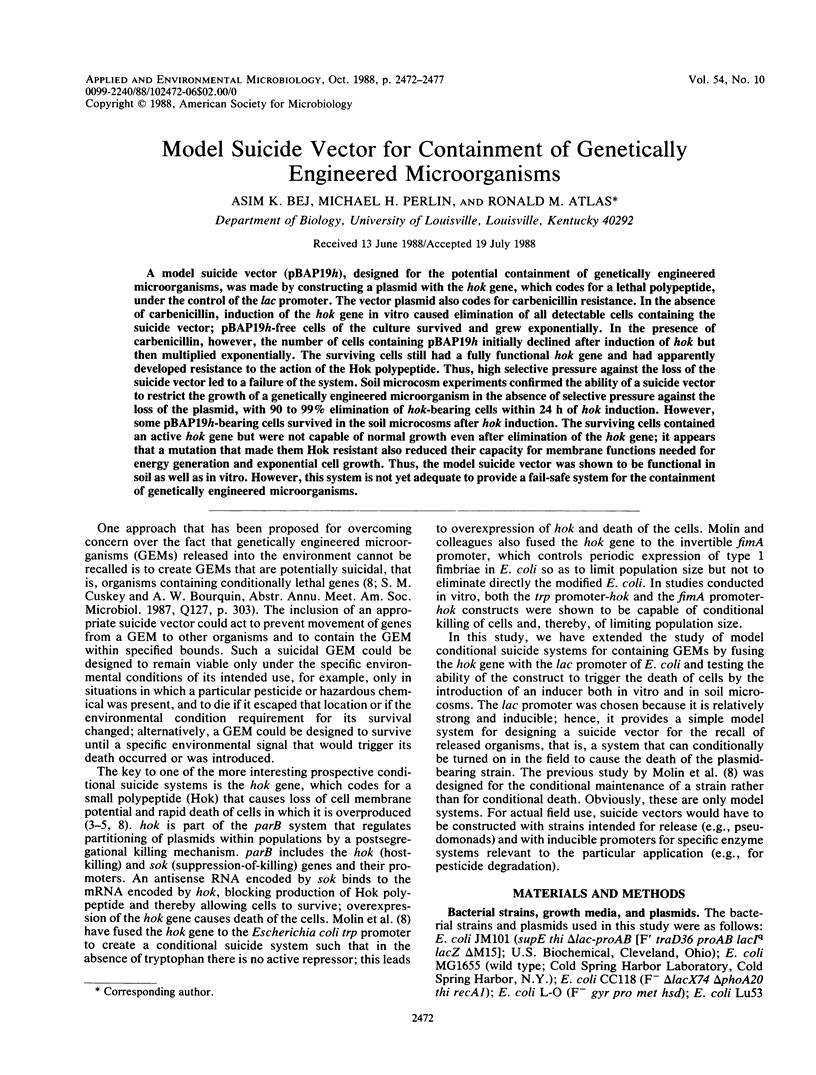
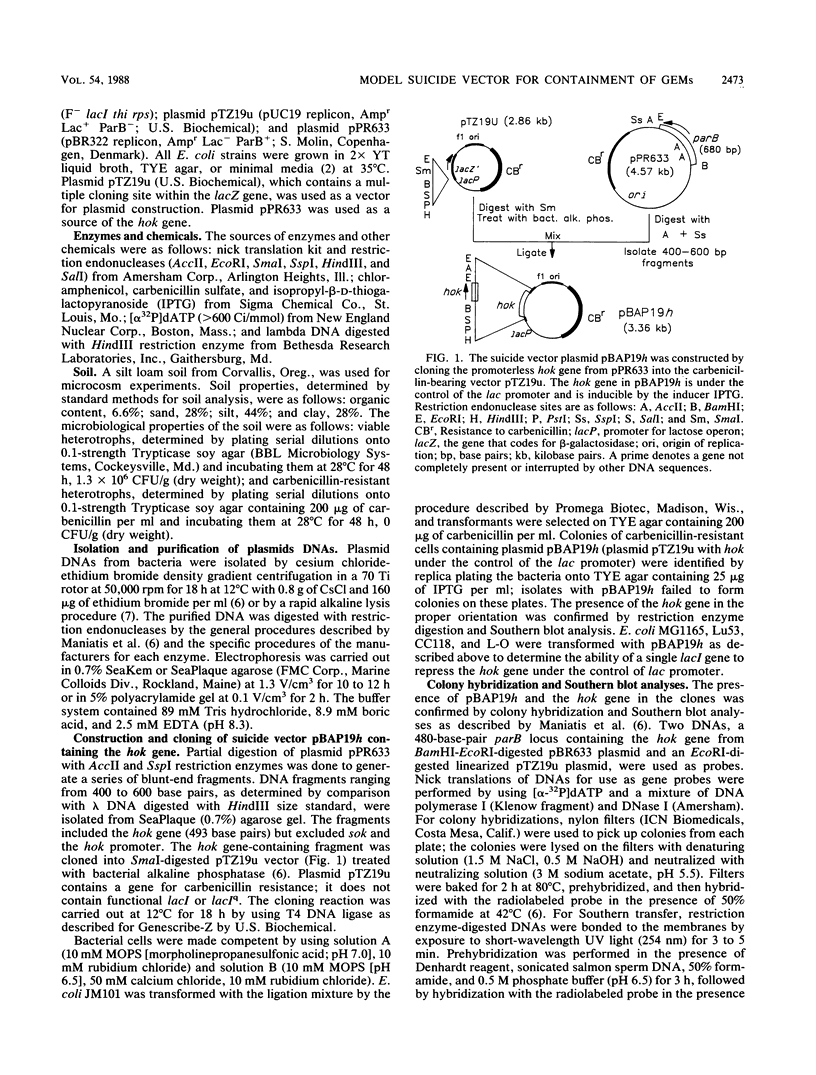
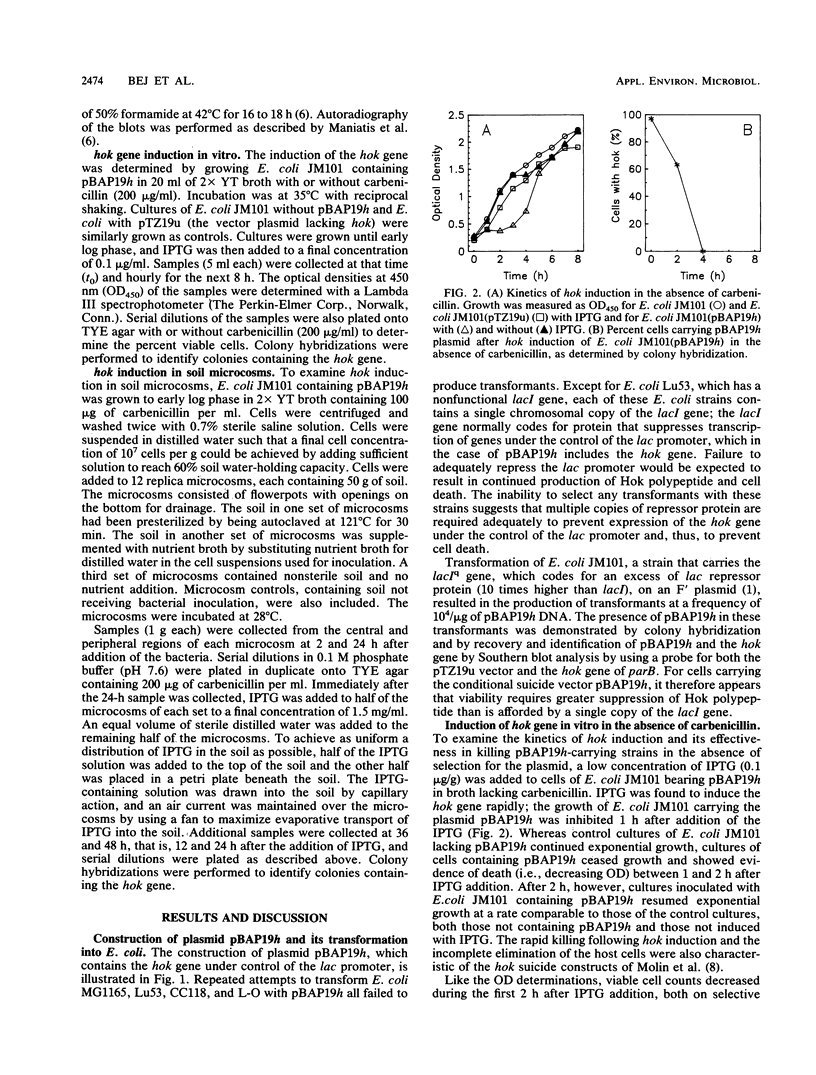
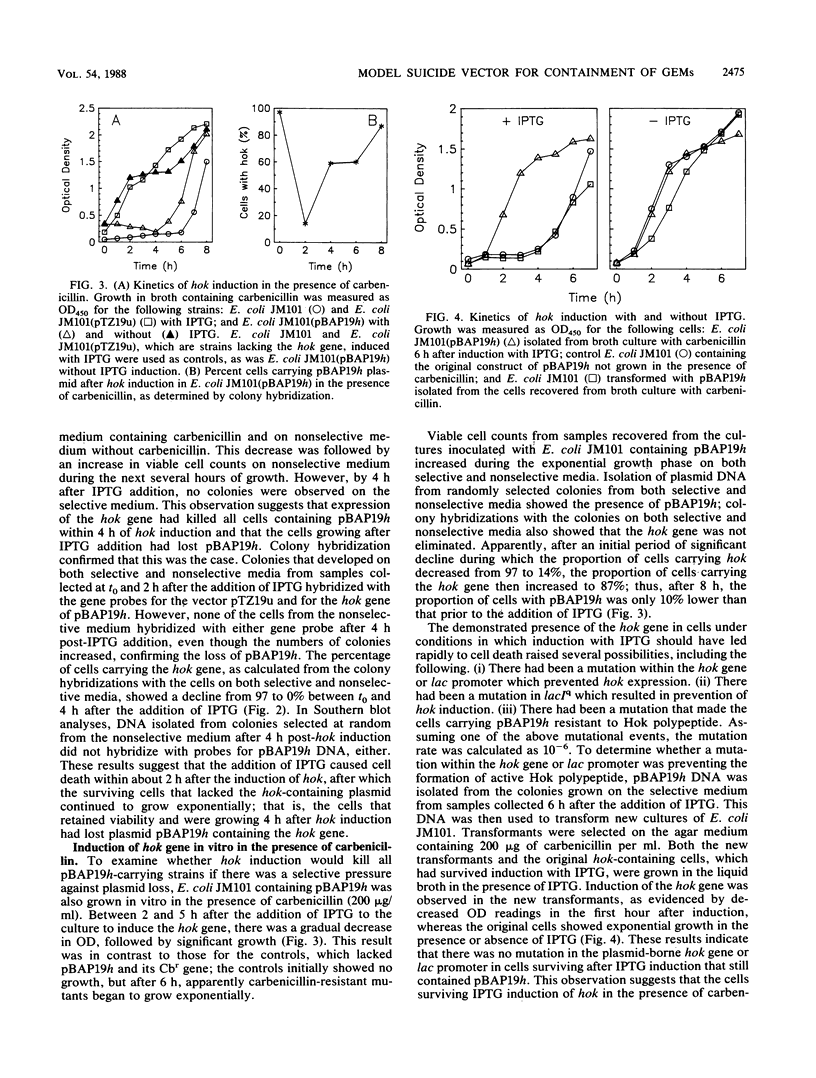
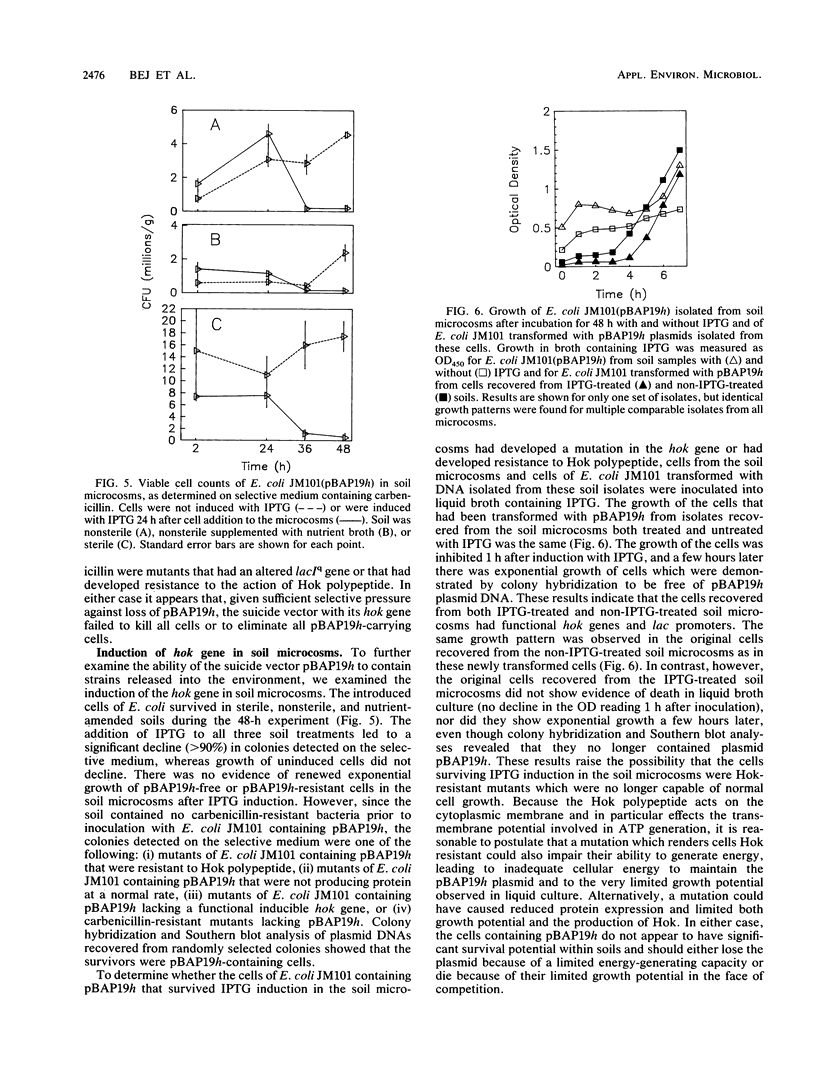
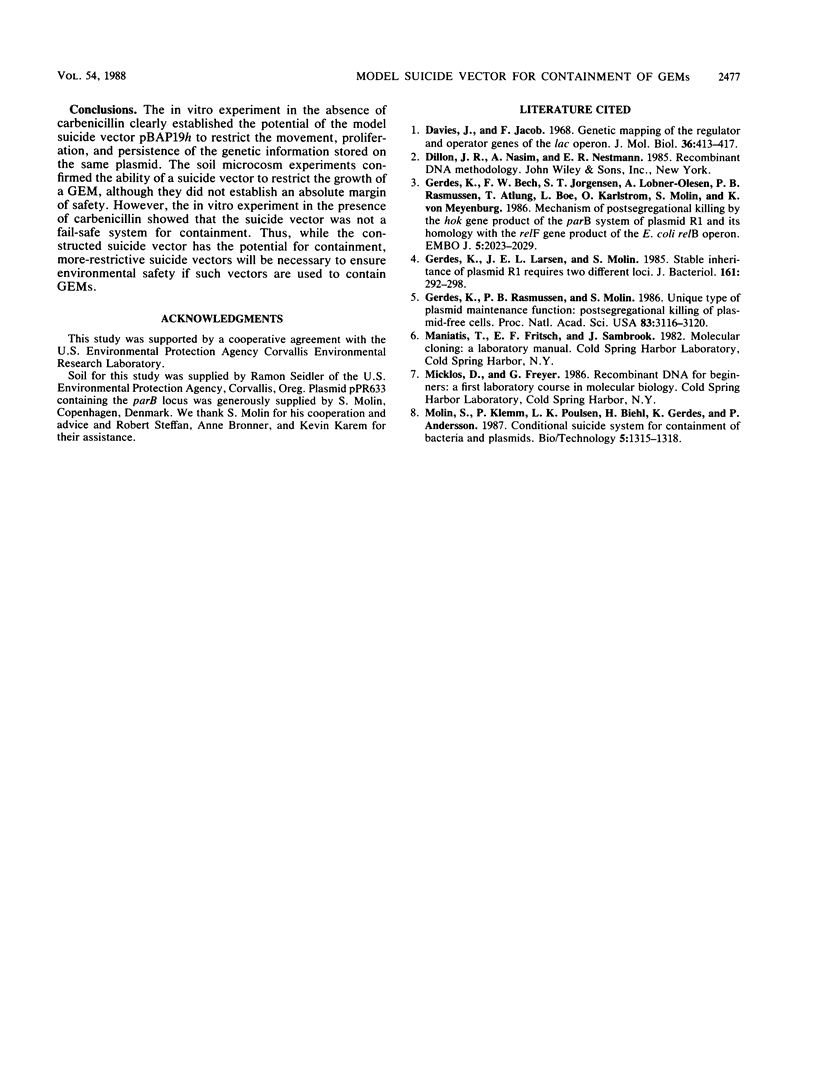
Selected References
These references are in PubMed. This may not be the complete list of references from this article.
- Davies J., Jacob F. Genetic mapping of the regulator and operator genes of the lac operon. J Mol Biol. 1968 Sep 28;36(3):413–417. doi: 10.1016/0022-2836(68)90165-4. [DOI] [PubMed] [Google Scholar]
- Gerdes K., Bech F. W., Jørgensen S. T., Løbner-Olesen A., Rasmussen P. B., Atlung T., Boe L., Karlstrom O., Molin S., von Meyenburg K. Mechanism of postsegregational killing by the hok gene product of the parB system of plasmid R1 and its homology with the relF gene product of the E. coli relB operon. EMBO J. 1986 Aug;5(8):2023–2029. doi: 10.1002/j.1460-2075.1986.tb04459.x. [DOI] [PMC free article] [PubMed] [Google Scholar]
- Gerdes K., Larsen J. E., Molin S. Stable inheritance of plasmid R1 requires two different loci. J Bacteriol. 1985 Jan;161(1):292–298. doi: 10.1128/jb.161.1.292-298.1985. [DOI] [PMC free article] [PubMed] [Google Scholar]
- Gerdes K., Rasmussen P. B., Molin S. Unique type of plasmid maintenance function: postsegregational killing of plasmid-free cells. Proc Natl Acad Sci U S A. 1986 May;83(10):3116–3120. doi: 10.1073/pnas.83.10.3116. [DOI] [PMC free article] [PubMed] [Google Scholar]


